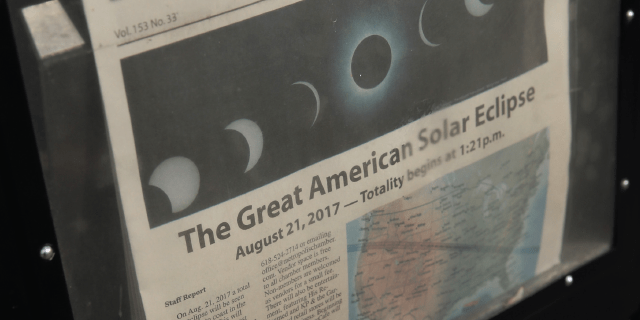2. General news outlets are the most common science news source; most-seen stories highlight discoveries and “weird” findings – Pew Research Center
Numbers, Facts and Trends Shaping Your World
Read our research on:
Full Topic List
Read Our Research On:
|
Even as news has diversified into multiple types of platforms and niche outlets, the general news media play an important role in providing the public news about science.9 This is true for active science news consumers as well, though they are more likely to also turn to specialty outlets.
Beyond the topics of science news, the most common science stories people see are reports on new discoveries, followed by stories about “strange or weird” research findings.
More Americans rely on news outlets that cover a range of topics for science news than on specialty outlets.
When asked whether they rely more on general news outlets or specialty outlets for science news, 72% of Americans say general news sources; 24% say they get most of their science news from specialty sources.
A similar propensity towards general news outlets emerges when asking more specifically about 10 different types of sources for science news. Some 54% of Americans regularly get science news from outlets that cover a range of topics. The next most common source is documentaries or other science video programs (45%), while roughly one-quarter of Americans rely on websites and blogs focused on science (26%) or science magazines (25%). Far fewer Americans regularly rely on science specialty radio programs or podcasts (12%), science and technology museums (12%), online discussion forums about science (11%), government agencies (10%) or advocacy organizations (6%) for science news.
There is an ongoing concern, particularly in the medical and public health communities, about the extent to which the public attends to alternative medical information, rather than conventional sources. When asked separately about these types of sources, just 8% of Americans say they regularly get science news from “sources that provide alternative perspectives to conventional science or medical research.”
Many of these sources for science news and information – general news outlets, specialty sources, and alternative sources – can also be reached via social media. Most social media users (79%) say they see science-related posts there, even if not very many. A detailed analysis of people’s use of social media for science news and information can be found in Chapter 4.
Active science news consumers are much more likely to rely on specialty sources than casual and uninterested consumers – but, even among this group, a 54% majority say, overall, they mostly rely on general news outlets for science news, while 45% say they get most of their news from science specialty outlets. By far, the majority of casual (71%) and uninterested science news consumers (81%) rely on general news sources for most of their science news.
When asked separately about 10 specific source types, similar shares of active, casual and uninterested science news consumers say they regularly get science news from news outlets that cover a range of topics and from family and friends. But active consumers rely more heavily on specialty science sources than do either casual or uninterested science news consumers. For example, active science news consumers are roughly two times more likely than uninterested news consumers to regularly get science news from documentaries or video programs (67%, compared with 34%). They are also much more likely to frequently get science news from science magazines and science-focused websites and blogs.
Active science news consumers get their science news from more source types. On average, active science news consumers regularly get their news from 3.7 out of 10 source types considered in the survey, compared with 2.7 among casual consumers and 1.8 among uninterested science news consumers.
Finally, as with other news sources, active science news consumers are also more likely to rely on sources that provide alternative perspectives to conventional science or medical research (19%) than either casual (8%) or uninterested science news consumers (4%).
Science news covers a wide range of scientific fields whether biology, medicine, physics or something else. Some have criticized science journalism for too much emphasis on “gee-whiz” writing that, while enticing, gives too little attention to the relevance of science for the average person or the quality of the research.
The data here indicate that there is a bit of both going on. Most Americans (56%) see scientific discoveries, and more than a third of Americans (37%) say they see science news stories that help them make decisions about everyday life for themselves and their family.
Still, about half (48%) see science news articles about “strange or weird scientific research findings.”
When asked to describe a recent science news story that helped them make everyday decisions, the most frequent topics mentioned were about medicine and health stories followed by food and nutrition stories. For example, one respondent mentioned a radio program about the shingles vaccine led them to get vaccinated and another mentioned a story about a correlation between eating red meat and propensity for chronic disease that led them to change their eating habits. A smaller share of those seeing such stories mention stories about climate change and the environment leading to decisions in their everyday life.
Science news also sometimes contains contradictory information or notes disagreement among scientific experts. Some 41% of Americans report having seen news stories with scientific information that conflicts with earlier findings on the same topic. About three-in-ten Americans (29%) have seen news stories noting disagreement among scientific experts; among this group, climate change stories are most commonly cited (32%).
Fewer U.S. adults report seeing science news stories about a science researcher’s misconduct (15%) or about scientific research findings that seem completely made up (18%). Those that have seen this kind of story mentioned a number of topics including climate change, extraterrestrials and a variety of other topics.
There are no more than modest differences across demographic and educational groups in the types of science news seen. Further, there are only modest differences between Republicans and Democrats (including independents who lean to each party, respectively) in the kinds of science stories encountered. For example, 32% of Republicans say they see news that reports disagreement among scientific experts, as do 27% of Democrats. Some 22% of Republicans say they see news reports about scientific research that seem completely made up – only modestly higher than the 16% of Democrats who say the same.
Fresh data delivery Saturday mornings
Weekly updates on the world of news & information
Topics
1615 L St. NW, Suite 800
Washington, DC 20036
USA
(+1) 202-419-4300 | Main
(+1) 202-857-8562 | Fax
(+1) 202-419-4372 | Media Inquiries
ABOUT PEW RESEARCH CENTER Pew Research Center is a nonpartisan fact tank that informs the public about the issues, attitudes and trends shaping the world. It conducts public opinion polling, demographic research, media content analysis and other empirical social science research. Pew Research Center does not take policy positions. It is a subsidiary of The Pew Charitable Trusts.
© 2024 Pew Research Center



